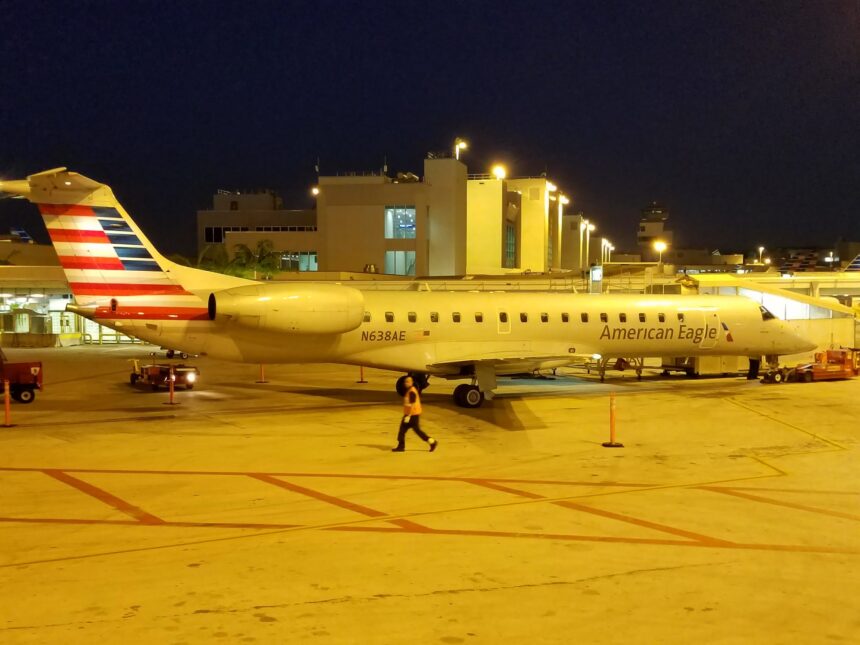Air travel is one of the safest modes of transportation due to stringent regulations and constant safety improvements. However, near-miss incidents remind us of the importance of precision and quick decision-making in aviation. One such case occurred on August 14, 2023 when American Airlines Flight 457Q and Spirit Airlines Flight 1444 experienced a close call at Boston Logan International Airport.
This article delves into the details of the incident its implications and the response from aviation authorities.
Overview of American Airlines Flight 457Q Incident
What Happened?
On the afternoon of August 14, 2023 American Airlines Flight 457Q, a Boeing 737-800, was preparing for takeoff from Boston Logan International Airport on its way to Chicago O’Hare International Airport. At the same time Spirit Airlines Flight 1444 an Airbus A320neo had just landed from Atlanta Hartsfield-Jackson International Airport and was taxiing toward its gate.
As the Spirit Airlines aircraft approached the hold line an air traffic controller noticed its proximity to the active runway. Concerned about the safety risk the controller instructed American Airlines Flight 457Q to abort its takeoff immediately.
Key Details of the Incident
| Aspect | Details |
| Date | August 14, 2023 |
| Time | Approximately 12:50 PM (local time) |
| Location | Boston Logan International Airport (BOS) |
| Involved Flights | American Airlines Flight 457Q (Boeing 737-800) & Spirit Airlines Flight 1444 (Airbus A320neo) |
| Intended Route | Boston (BOS) to Chicago (ORD) |
| Reason for Abort | Spirit Airlines aircraft encroached on the active runway |
| Outcome | Takeoff aborted, American Airlines flight delayed |
| Investigation Authority | Federal Aviation Administration (FAA) |
Passenger Reactions and Experience
The sudden aborted takeoff caused panic among passengers aboard American Airlines Flight 457Q.
- One passenger described the event as “terrifying,” as they felt the abrupt deceleration of the aircraft.
- The aircraft returned to the gate for further checks and departed for Chicago at 2:38 PM, causing a delay of over two hours.
- Fortunately, no injuries were reported, and both flights continued their operations without further issues.
FAA Investigation and Safety Measures
FAA’s Response
The Federal Aviation Administration (FAA) launched an investigation into the incident. Their main objectives included:
- Determining the cause of the incident – Investigating whether the Spirit Airlines aircraft encroached on the runway due to pilot error, miscommunication, or airport system failure.
- Reviewing Air Traffic Control (ATC) procedures – Assessing if ATC protocols were followed correctly and if the controller’s decision to abort the takeoff was justified.
- Implementing safety recommendations – Identifying ways to prevent future runway incursions and improve coordination between aircraft and ground control.
Lessons from the Incident
The aviation industry constantly updates its protocols to enhance safety. Some key takeaways from this near-miss include:
✅ Better runway monitoring: Airports need improved surveillance to detect incursions before they become critical.
✅ Improved pilot awareness: Pilots must strictly adhere to taxiing protocols and maintain communication with ATC.
✅ Updated safety guidelines: Airlines and airports should regularly train pilots and ATC personnel on emergency responses.
Similar Incidents in Aviation History
While the American Airlines Flight 457Q event was a close callc similar incidents have occurred in aviation history.
- JFK Runway Incursion (2023) – A Delta Airlines Boeing 737 had to abort takeoff when an American Airlines Boeing 777 crossed the runway without clearance.
- Barcelona Near Miss (2014) – A UTair Boeing 767 had to perform a go-around after an Aerolineas Argentinas Airbus A340 crossed the runway.
- Tenerife Airport Disaster (1977) – A miscommunication led to a collision between two Boeing 747s, resulting in the deadliest accident in aviation history.
These incidents highlight the critical need for strict runway control and communication protocols to avoid accidents.
Conclusion
The American Airlines Flight 457Q incident at Boston Logan International Airport serves as an important reminder of the complexity and risks involved in aviation. The quick response by the air traffic controller prevented a potential disaster, ensuring the safety of passengers crew and airport staff.
The FAA’s investigation will likely result in enhanced safety measures to minimize the chances of similar incidents in the future. While aviation remains the safest mode of transportation continuous improvements in pilot training air traffic control, and airport management are essential to maintaining high safety standards.
By learning from close calls like this, the industry can work toward a future with even fewer aviation risks and safer air travel for all.




